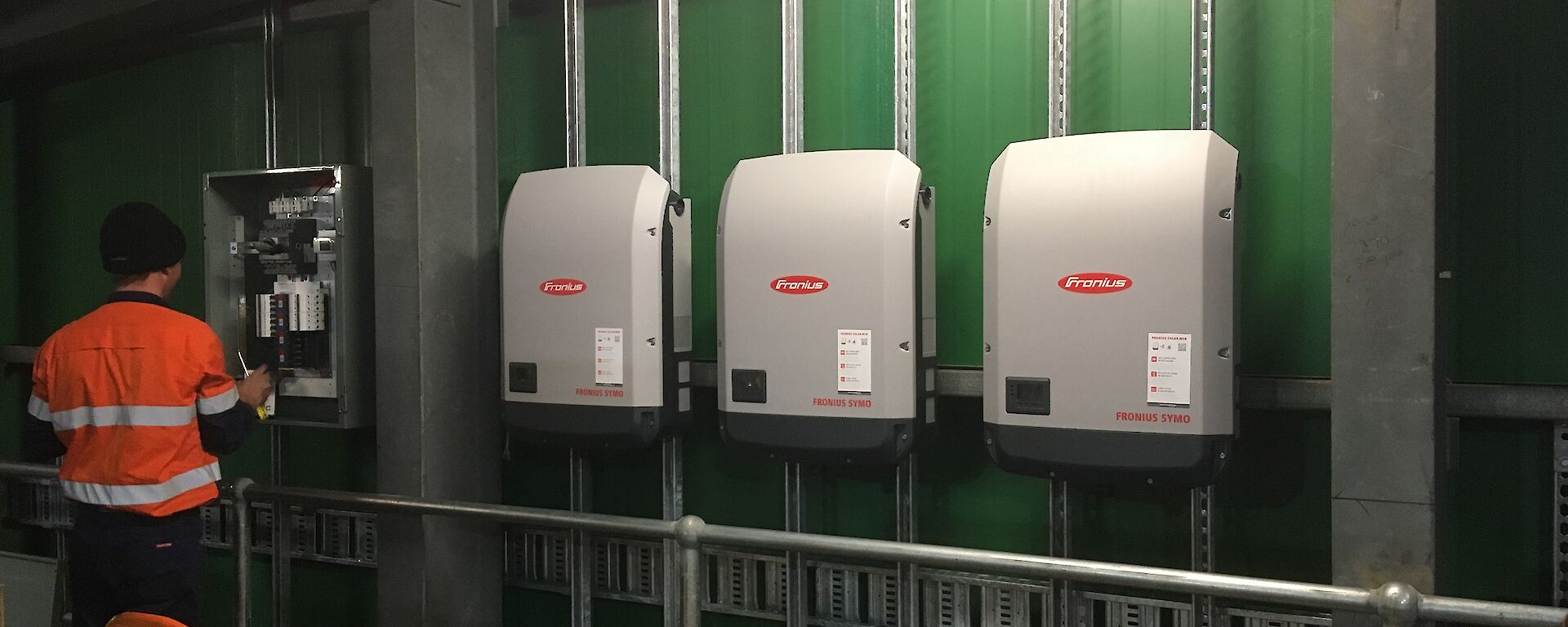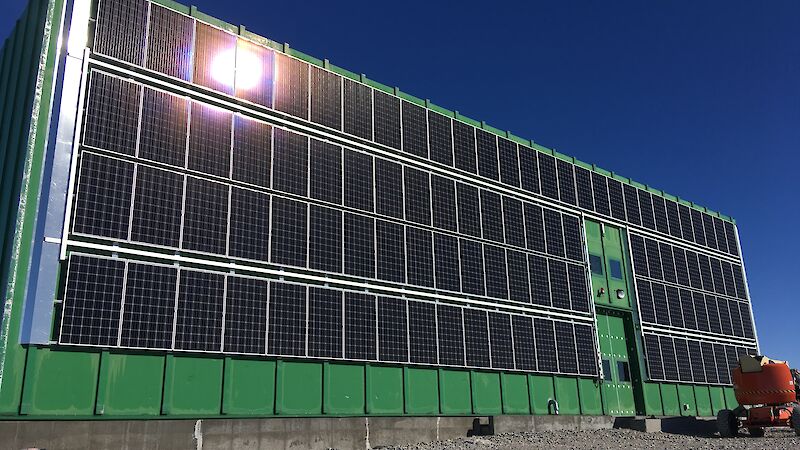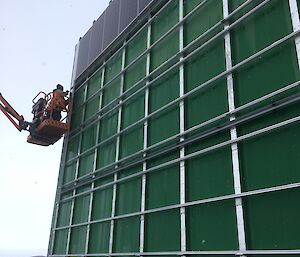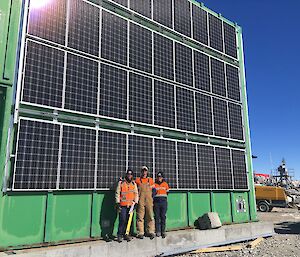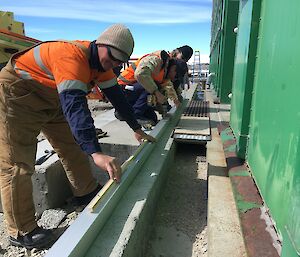“This is the first solar power array at an Australian Antarctic research station and amongst the largest in Antarctica,” Mr Ellis said.
“It will reduce Casey station’s reliance on diesel generators for electricity, cutting fuel costs and emissions, as well as boosting the station’s capacity in peak periods.”
The project is a collaboration between the Australian Antarctic Division and Masdar, a renewable energy research and development corporation in the United Arab Emirates, to investigate a range of energy efficiency and energy management options at Australia’s Antarctic stations (Australian Antarctic Magazine 34: 19, 2018).
Mohamed Jameel Al Ramahi, Chief Executive Officer of Masdar, said the project was an opportunity to pool energy-efficiency expertise from the hot deserts of the Middle East and the cold desert of Antarctica.
“This project will help to build expertise in, and the performance of, solar systems in cold and remote environments,” Mr Al Ramahi said.
“It will test the durability and suitability of the solar panels to the strong wind and snow load in Antarctica and help us to determine if it is an efficient way of powering a station.”
Masdar sourced the solar panels from Aleo Solar in Germany, while Australian Antarctic Division engineers undertook wind modelling, produced technical drawings, and devised a special mounting system of brackets and rails to fit the corrugated shape of the green store cladding.
Engineering Services Supervisor at Casey, Doreen McCurdy, said her six-person team first installed the brackets and rails to hold the panels flush against the wall. Then they installed external cable ducting, internal cable trays, a switchboard, and three inverters to convert the variable direct current (DC) into 240V alternating current (AC).
The team faced some challenging conditions with temperatures as low as −7°C and a number of blizzards.
“The cold was a challenge, as the brackets and bolts are small and fiddly and can’t be installed while wearing gloves, so we had to use hand warmers to keep our fingers nimble,” Ms McCurdy said.
“On windy days we had to focus on the internal installation, as the elevated work platform we use outside can’t operate in winds above 15 knots.
“Once all the rails and brackets were in place though, we were able to install about 15 panels a day.”
While the panel installation is unusual in its flush mounting against a wall, it has been designed to strike a balance between maximum solar gain and stability in the wind, as well as ensuring the panels are easy to install, access and maintain.
There are now plans to look at whether solar farms will be suitable for use at Australia’s other stations.
“Once we see how the solar farm performs as part of the station’s power grid, we can look at how to get more out of the technology in the future,” Mr Ellis said.
Wendy Pyper
Australian Antarctic Division

